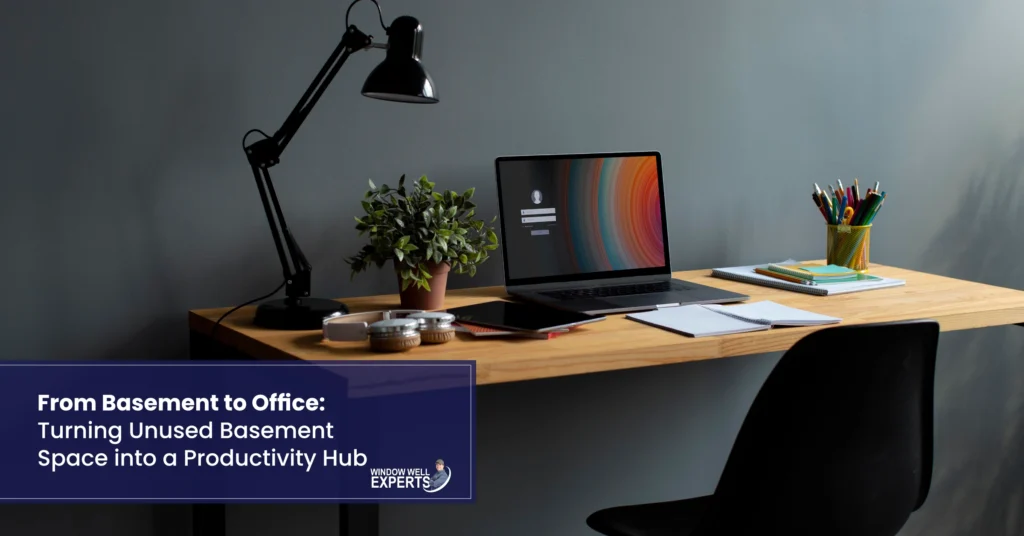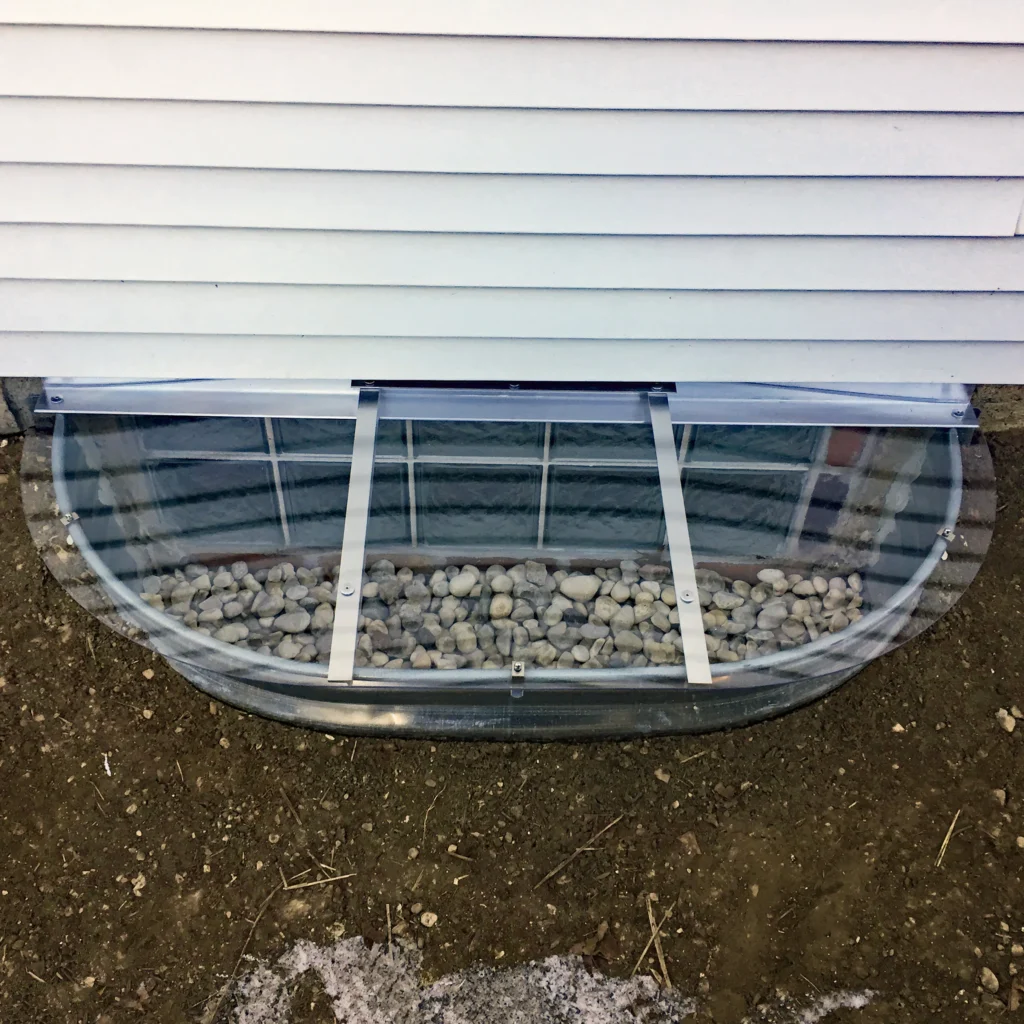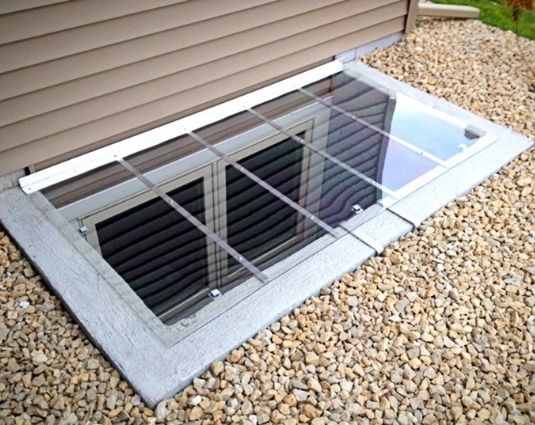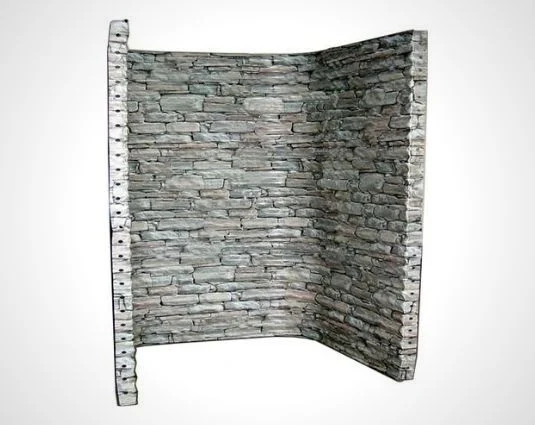In the United States, an average of one-third of single family homes have a basement, according to the U.S. Census Bureau. In the Midwest and North Central states where concrete foundations and basements are used to prevent buildings from shifting in the freeze/thaw cycle, this percentage is much higher, 71-84%.
Basements have come a long way from our great-grandparents’ “root cellar” or “coal cellar”. It’s no longer just a dusty hole in the ground for storm shelters, utilities, storage, and furnaces. In more recent times, the lowest level of the house has graduated to useful living space – family rooms, bedrooms, and with the advent of “work from home”, home offices. Transforming an unused or little used room in a basement into a productive workspace doesn’t have to be expensive or complicated and can increase resale value of the dwelling.
Basement home office idea: Start with a concept
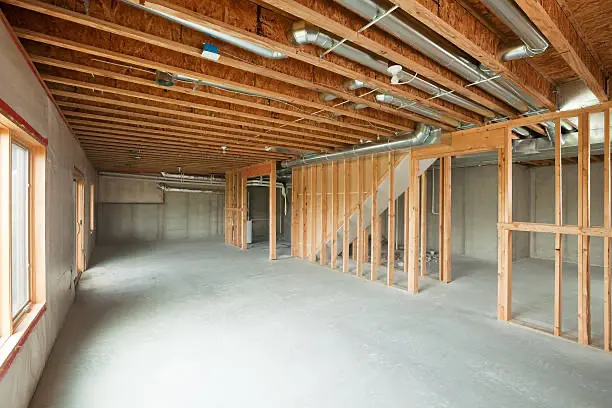
Basement home office ideas are everywhere. Pinterest is a great place to start. Go ahead, search “Basement Home Office” or “Small Home Office Ideas”, even better if you have a favorite style or color to begin with. There are so many helpful pins!
Finished or unfinished basement? Windows or windowless? How to make a faux window? What flooring to use? Storage? Desk ideas? What are the best color combinations for ceilings and walls? How about making a guest room/home office combination? How to make the office have a professional look for online meetings? A simple search will provide lots of ideas.
Map out the space
Will the basement office space be a section of a family area or perhaps a guest room, or is the room empty? If you have furniture already, it’s a lot easier to figure out where the desk should go…but consider these ideas if you are sharing a room with a family area or a guest room:
- How much space is needed?
- Which way will the desk face – toward the wall for better concentration or facing out into the room for a more open feel when working?
- Dividing an area using a rug will help define the office area, so will other furniture and shelving units. They will provide welcome storage for both parts of the shared room. Attractive bins or baskets on these shelves will stow non-decorative items out of sight. Alternate the bins with books and decorative items such as photos, plants, and other items for a decorator feel.
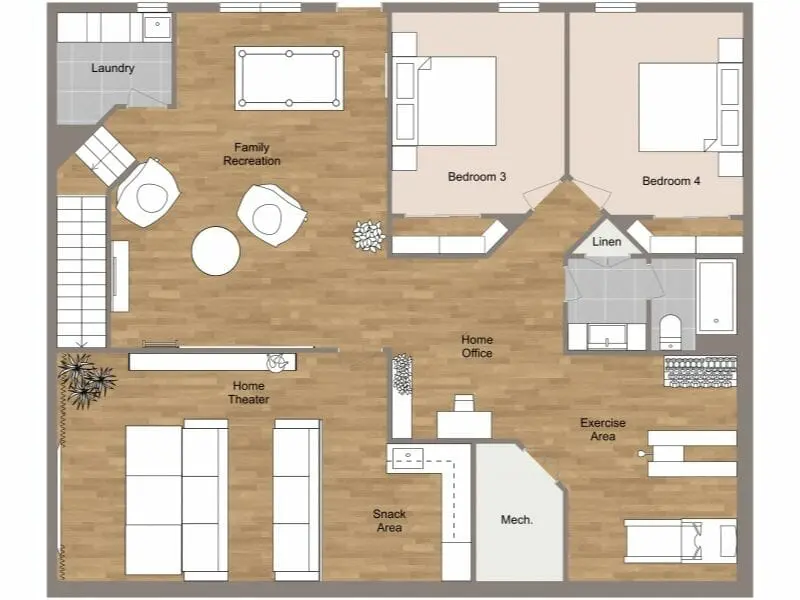
- Is a coffee or snack area desirable? A dorm fridge and a coffee maker will save trips upstairs and make the area cozier. This could also act as part of the room divider in a shared area, so it is accessible to everyone.
- Speaking of cozy, a small end table and two comfortable chairs will also add a great feel to the office. This will be an area away from the desk, and a comfortable place to think away from the distractions of email.
- Soundproofing an unfinished room in the ceiling and walls will give privacy when needed for calls and meetings, as well as freedom from distractions in the rest of the residence.
Declutter for a clean slate
To create a basement home office from a room that is already in use, the first step is clearing clutter. Starting fresh will make it easier to repurpose the space from a mess to an oasis of productivity.
AllThingsAdmin.com makes a great point with the photo above. A cluttered workspace does not promote efficiency, and may produce a stress response just by entering the room.
- First things first. Get rid of obvious trash.
- Then sort into three piles: keep, donate, trash. It pays to have garbage bags and boxes ready for the donations and trash. Clear them from the area often so there is room to move.
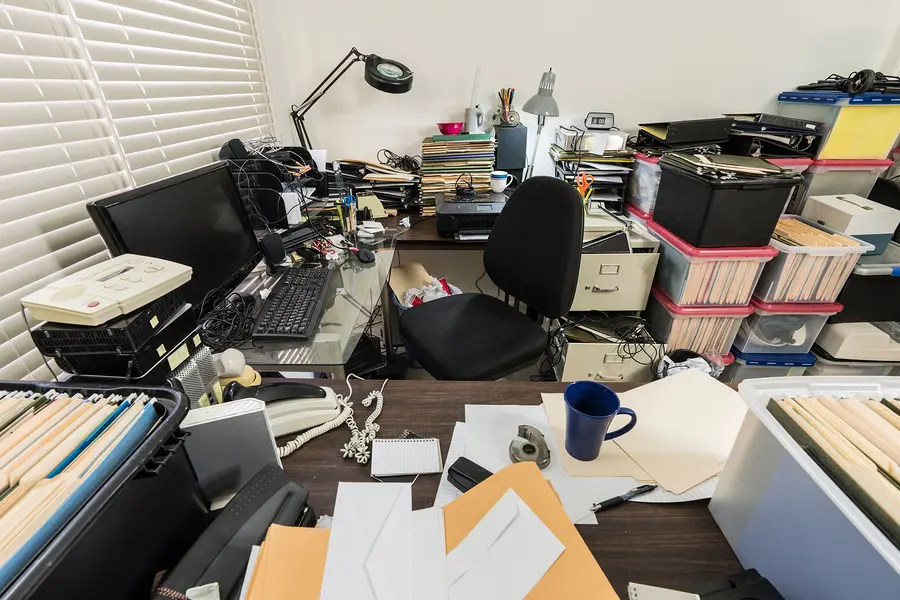
- Invest in appealing storage bins. Sort the items that are being kept as you go: memorabilia, craft items, etc., labeling the bins for each category. Have a place in mind for these items to “live”, like a shelving unit in the closet.
- When organizing your office, group similar things together. As in, paper goes on the shelf under the printer. Contain small office supplies in trays. Give everything a home, and make the rule that things aren’t set down. Things should be put away. Don’t handle anything twice. It may seem less efficient, but putting something away right away takes less time than coming back to it.
Organization is an investment in oneself. The power that comes when a needed item is right where it should be is a big boost to productivity, and is a huge time saver.
Choosing Furnishings and Colors
After the room or area is cleared, choose calming, neutral tones for the basement office. Whether warm tones or cool are preferred, colors that aren’t jarring to the nerves are important. Blues, tans, grays and greens are tried and true palettes for a calm space and create productive vibes.
Forbes.com has this great list of things to consider when setting up an office. The main points are from the article, but have been elaborated upon to help get the ideas flowing.
- Get some natural lighting. Incorporating natural light into your basement home office can significantly enhance its ambiance and functionality. Consider integrating decorative stone window well along with a polycarbonate cover, such as sloped or flat window well cover, to achieve this seamlessly. Not only does the decorative stone window well add an aesthetic appeal to your space with its faux rock design, but it also allows ample light to filter through, brightening up your workspace. Whether you’re tackling daily tasks or conducting virtual meetings, the infusion of natural light creates an inviting atmosphere conducive to productivity.
- Find a quiet spot. What is wonderful about a basement is that it is “off the beaten path” of the traffic paths in the home. If the walls aren’t sound insulated, use area rugs, carpet and curtains to keep the sound from echoing.
- Pick the right colors. This has already been discussed–but remember that what is popular right now may not be something that works for the homeowner. Office spaces do not need to be stark white. Stick to what is harmonious with the rest of the home. A little looking around online will give abundant ideas for the right colors. If you choose saturated or dark colors, keep in mind that the lighting that is chosen will make or break the decor.
- Choose ergonomic furniture. If this office is going to be used as a work from home office, investing in ergonomic furniture, especially seating. An office chair that gives good back support and encourages good posture will make all the difference when it comes to concentration, being alert, and preventing fatigue.
- Add a personal touch. Personal touches give motivation, can inspire and motivate. Also a touch of coziness sets a good atmosphere for work.
- Focus on personal needs. Knowing what is needed to do the work efficiently, including phone and computer setup, the proper peripherals – mouse, keyboard, monitor and a printer, and how to set them up for optimal workflow. Is an additional table needed to spread out project materials? Are there enough power outlets to make everything work efficiently without tripping over extension cords?
- Eliminate all distractions. This speaks for itself. TV, children, spouse, pets … don’t let the normal day to day goings in the home interfere with the mission of productivity.
- Use smart storage solutions. We mentioned shelving before, but there are many other ways to store items like paper and periodicals. Using memo boards, magazine files and bins will keep things organized and efficient. If paper files are a must, so is a filing cabinet.
- Lastly, don’t underestimate background music and the art on the walls. Music will help block out the distractions and aid, and the right pictures on the wall will finish the look and make the basement home office an appealing place to be.
Conclusion
A basement can provide a quiet place to work, whether it’s a full time work from home job or a corner of a room to track the family finances. Exploring various basement home office ideas can transform this space into a productive and inspiring environment. A bit of thought and some planning will make a basement home office a great place to get things done.
Explore more helpful resources for basement improvement:
- Learn about basement remodeling and mold prevention techniques in this informative guide: Basement Remodeling: Mold Prevention
- Ensure your home’s safety with egress ladder installation. Discover how to enhance home safety with this essential feature: Enhancing Home Safety: Egress Ladders
These articles offer valuable insights and tips to complement your basement transformation journey and create a secure, comfortable environment.

